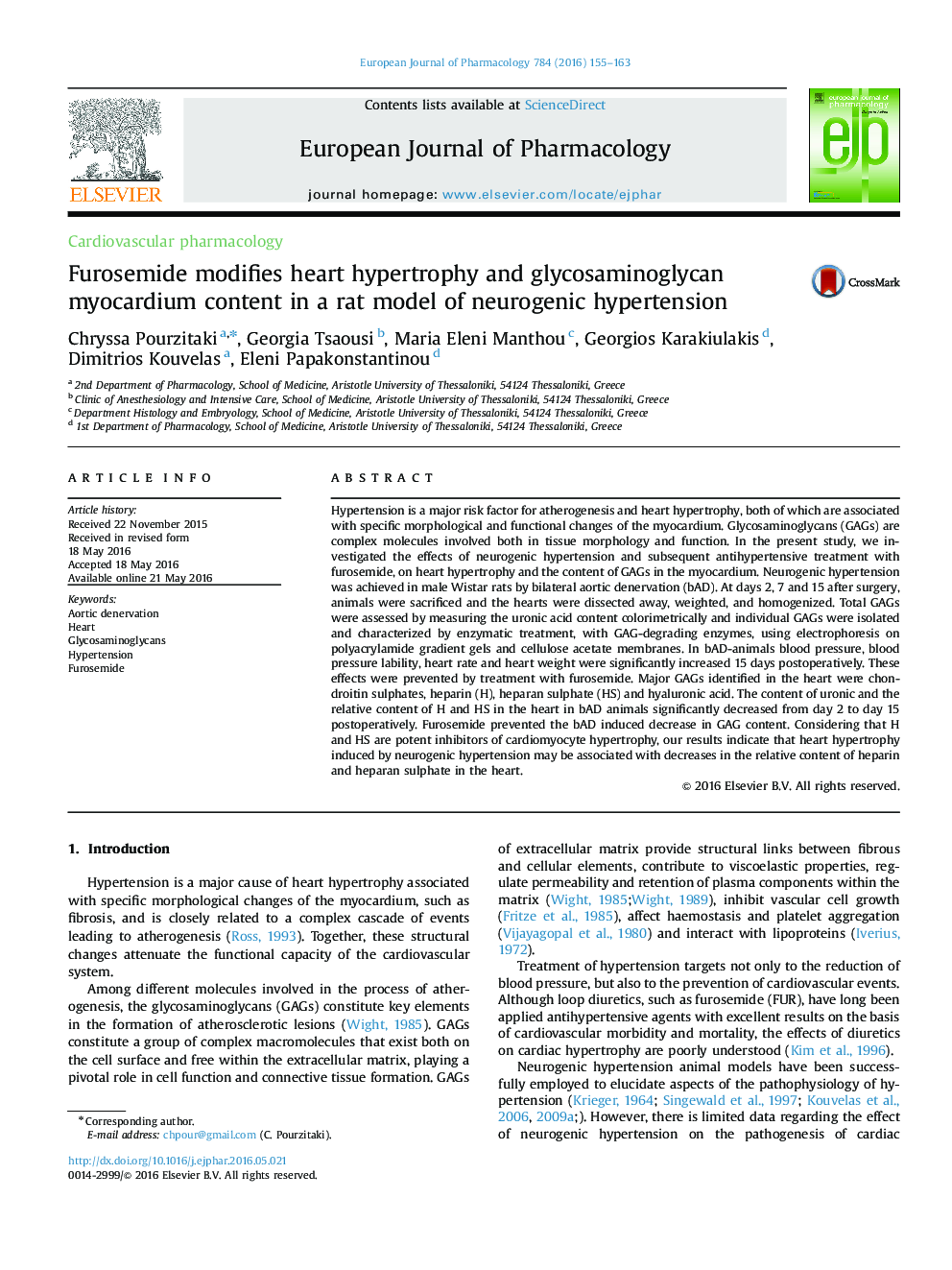| Article ID | Journal | Published Year | Pages | File Type |
|---|---|---|---|---|
| 2530912 | European Journal of Pharmacology | 2016 | 9 Pages |
Hypertension is a major risk factor for atherogenesis and heart hypertrophy, both of which are associated with specific morphological and functional changes of the myocardium. Glycosaminoglycans (GAGs) are complex molecules involved both in tissue morphology and function. In the present study, we investigated the effects of neurogenic hypertension and subsequent antihypertensive treatment with furosemide, on heart hypertrophy and the content of GAGs in the myocardium. Neurogenic hypertension was achieved in male Wistar rats by bilateral aortic denervation (bAD). At days 2, 7 and 15 after surgery, animals were sacrificed and the hearts were dissected away, weighted, and homogenized. Total GAGs were assessed by measuring the uronic acid content colorimetrically and individual GAGs were isolated and characterized by enzymatic treatment, with GAG-degrading enzymes, using electrophoresis on polyacrylamide gradient gels and cellulose acetate membranes. In bAD-animals blood pressure, blood pressure lability, heart rate and heart weight were significantly increased 15 days postoperatively. These effects were prevented by treatment with furosemide. Major GAGs identified in the heart were chondroitin sulphates, heparin (H), heparan sulphate (HS) and hyaluronic acid. The content of uronic and the relative content of H and HS in the heart in bAD animals significantly decreased from day 2 to day 15 postoperatively. Furosemide prevented the bAD induced decrease in GAG content. Considering that H and HS are potent inhibitors of cardiomyocyte hypertrophy, our results indicate that heart hypertrophy induced by neurogenic hypertension may be associated with decreases in the relative content of heparin and heparan sulphate in the heart.
